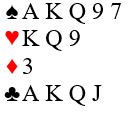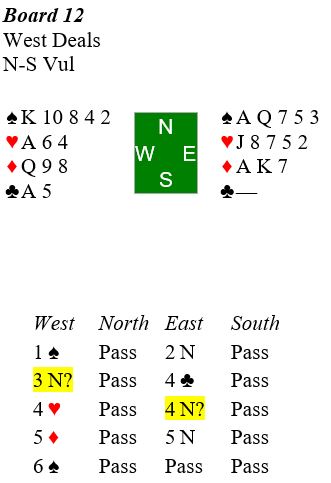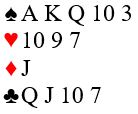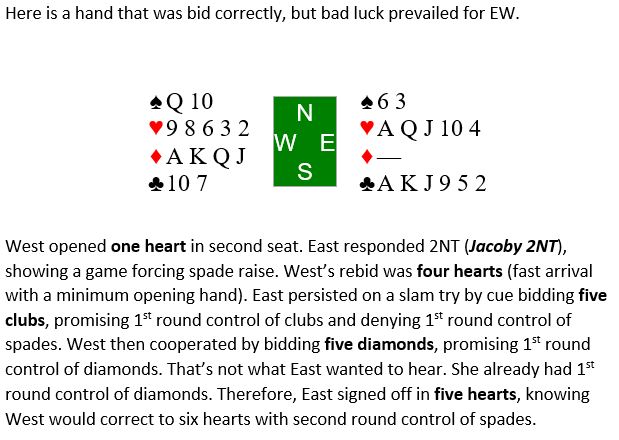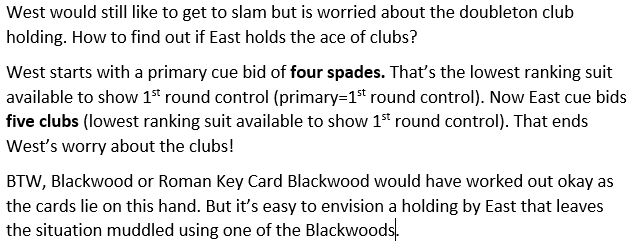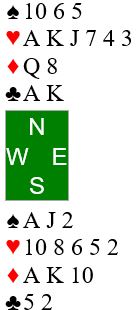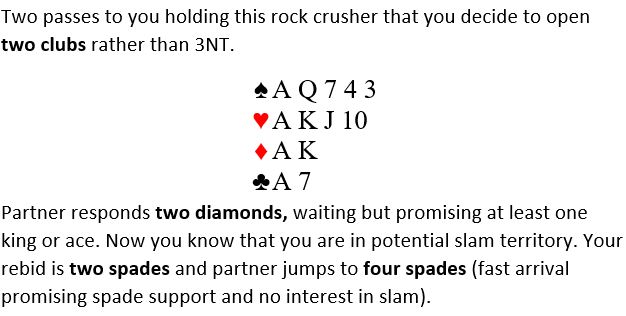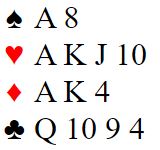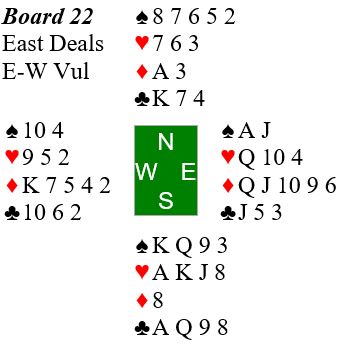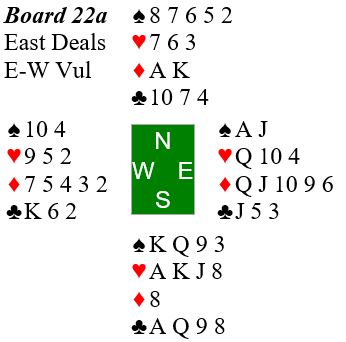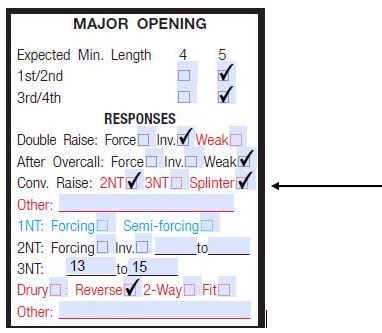Here is an auction I observed recently on BBO:
What do you think of the bidding by North? And how about South’s action? Give it some thought and see my critique below:
North erred by “super” accepting the transfer (jump to 4S) with the known 9+ card fit. That may work out occasionally but not recommended for two reasons:
- South knows partnership assets within half a point. So, South will know to pass, drive to game, or check on prospects for slam. Super accept uses up too much bidding space, reducing ability to make cue bids at the four-level.
- If South has a bust hand, North may have trouble making four spades. Don’t risk an almost certain plus score by overbidding.
South was on the right track to visualize a slam opportunity if partner has a diamond fit and if partner has the ace of hearts. Those are two big IFs. Too big to commit to slam. South erred by not passing North’s bid of four spades.
Post mortem: Best way to reach slam is to cue bid your way there. North used up too much space with the “super accept”. Without it, South could have made a mild slam try by bidding four diamonds. North would then temporize with five spades, denying first round control of hearts. And, since South should be worried about two quick losers in hearts, that’s where the bidding would end.

